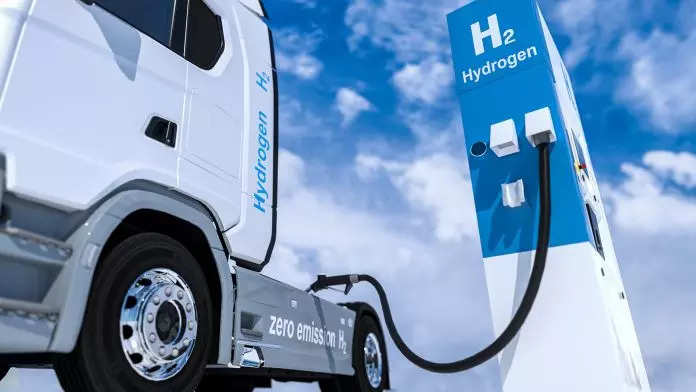
New Delhi: Automakers are experimenting with a mix of half a dozen fuel technologies in their energy baskets. They are slowly graduating from the conventional fuels, petrol and diesel, to natural gas, blended fuels like flex fuels and biofuels and to zero emission battery electric vehicles (BEVs) and hydrogen-powered vehicles (HPVs).
While hydrogen has been a topic of discussion in the automobile industry since the past decade, it is becoming an active part of the ecosystem to move towards decarbonisation. Now, HPVs can be further divided into hydrogen fuel cell electric vehicles (FCEVs) and hydrogen internal combustion engines (H2 ICE). FCEVs generate electricity from hydrogen in a device called fuel cell that is used to power the electric motor, whereas H2 ICE burns hydrogen in an internal combustion engine.
According to Srihari Mulgund, Partner- New Age Mobility, EY Parthenon, H2 ICE will require minimum incremental changes to the conventional powertrain and vehicle architecture, which makes it a logical option, especially for cost-conscious markets such as India, Southeast Asia, Africa, etc. It can also potentially open up new opportunities such as retrofitting of the current on-road ICE commercial vehicle fleet, long distance intercity buses, etc.
Girish Wagh, Executive Director, Tata Motors, said, “As it appears today, heavy-duty long-haul applications cannot be addressed by BEVs for commercial vehicles (CVs). For fuel cell electric, a very high level of purity in the hydrogen is required, and hydrogen ICE can work at a lower level of purity. Secondly, hydrogen ICE allows using the current available infrastructure that has been in place for decades. Hence, in a way, it can also keep that value chain for longer.”
Talking on similar lines, N Saravanan, Chief Technology Officer (CTO), Ashok Leyland, said, “Hydrogen ICE makes sense from the medium-term perspective. It seems like a practical solution not just for us, but from the perspective of the ecosystem as it is zero carbon with the only pollutant being nitrogen, which is also way less than the amounts seen in the conventional ICE fuels. ”
FCEVs are expected to be a preferred option for light load, long haul applications. “A well-tuned fuel cell can run at above 60% efficiency, which means operating cost will be lower than ICE engines, which run at 40%-45% efficiency,” said Pradeep Kumar, VP (Product Engineering), DICV.
“The efficiency for hydrogen ICE is similar to conventional ICE. This means that for heavy load, mining, off road applications, ICE will make sense because it will operate at optimal efficiency. In these situations, the efficiency of fuel cells can go even below ICE, resulting in a big difference in operating cost,” he said.
However, FCEVs are a completely new technology and expected to be fairly expensive than H2 ICE owing to spending on R&D, infrastructure, development and testing methods. H2 ICE vehicles were officially showcased at the Auto Expo 2023 for the first time in India.
Raghavendra Vaidya, MD & CEO, Daimler Truck Innovation Centre India, said, “In the next decade, we will figure out which technology becomes mainstream, but we firmly believe hydrogen will be a part of the journey.”
Expected setbacks
At the moment, industry experts believe that there are lots of unknowns on the technology front, even globally. Irrespective of whether the automakers go for hydrogen ICE or fuel cells, what needs to be figured out is how to produce green hydrogen.
Just like FCEVs, H2 ICE will require huge investments for storage tanks as Hydrogen is a highly flammable gas. Carbon fibre could be a preferred choice of material for these tanks. Additionally, while fuel cells are zero emission, hydrogen ICE is still polluting, even though the pollution levels are not more than 5% compared to a conventional diesel vehicle engine. Owing to this, Hydrogen ICE may not be specifically counted in the category of green fuel, which may hinder OEMs from government incentives in certain countries.
Mulgund of EY believes that H2 ICE can be a bridging technology to remain cost-competitive till the fuel cell technology is commercialized while propelling the development of the hydrogen infrastructure.
Pradeep Kumar of DICV said, “Policy, cost and technology will ultimately decide which will be a better choice of fuel. At the moment, we are in the messy middle where all the technologies are evolving. When the green era finally comes, it seems like EVs or hydrogen will not be a transition to one another, but coexist.”
For instance, the time taken to fill the hydrogen tanks is less as compared to charging a full battery pack. However, transporting and storing the hydrogen is a challenge.
Raghavendra Vaidya also said that creating a supply chain and ecosystem, along with reaching the price parity for consumers is a challenge.
The government in India is also focused on the National Hydrogen Mission, which gives them a direction and adds confidence to OEMs’ plan of transitioning towards the emerging technology. However, the hydrogen supply chain including its production, transmission, distribution, making it available at retail are still in the works.
















